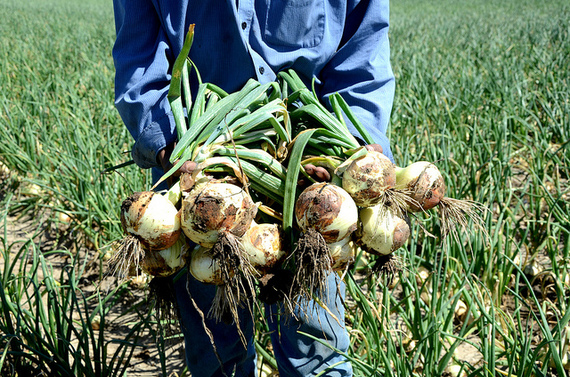Uber, Airbnb, and the Food System: How We Can Make Local Food More Affordable
Posted: Updated:
It is widely accepted that eating fresh, local foods is healthier and more nutritious. Smaller farms are generally more responsible with methods of production and when these products move through a shorter supply chain, it is easier to track them for food safety purposes--not to mention that the food maintains its freshness and retains vital nutrients. However, despite their best intentions, many consumers balk at one aspect of buying local foods: the hefty price tag.
Imagine if local farmers and producers could cut back on some of the costs of getting their harvest from the field to the market and, by doing so, make their products more affordable to consumers.
One of the most expensive obstacles these farmers face is a lack of infrastructure through which food can be quickly and efficiently distributed. So the question becomes: how can we move food more directly from local farms to the end consumer, ensuring that a greater number of people are able to afford these fresh, healthy products?
Rather than building expensive new infrastructure, I would argue that the answer lies in more efficient use of trucks already on the road, neighboring barns with storage, and sales platforms that are already designed to bring seller and buyer together. We need to bring the Uber and Airbnb sharing economy to the food distribution industry. The real power of these technology platforms is that they provide a way for people to access resources that others already have, while letting the owners of those resources find customers that they wouldn't otherwise be able to access.
In the local food world, the most common response to the distribution question is to build new food hubs. But physical food hubs require warehouses and warehouse staff, fleets of trucks and delivery teams, robust sales teams, and good software to keep everything organized. This requires intensive time and capital to start up, and profit margins in the food business are so low that these food hubs need to achieve serious scale fast just keep the lights on.
Why don't we bring together the pieces that already work to create one synergetic system? Many farms have room in their barns for storage, and online marketplaces like FarmersWeb allow sellers and buyers to find each other and do business. The missing link here is the trucks and delivery teams that deliver the goods from seller to buyer. Like Uber's on-demand transportation model, this missing link could come from an online logistics platform that would allow farms to utilize existing transportation for their products--via a neighboring farm that is already making their own deliveries with extra room their truck, or a national distributor already passing along that route with space for a pallet, or even an entrepreneur with his own truck and some spare time to make deliveries for local farms within his region.
FarmersWeb is currently working to make this a reality, allowing farms and food producers to link up with logistics providers in their area. However, to truly build a synergetic food system, we need to have farmers and truck drivers all across the country buy into this idea of turning their extra space into a commodity available for purchase. In the same way that homeowners turn an empty room into revenue by renting it out to tourists, farms should bring in extra cash by renting out space in their barn. And similar to Uber drivers earning more money by making their empty car available online to eager consumers, truck operators should transparently list online if they can deliver additional loads for local farmers. This is a win-win-win for everyone. Applying the sharing economy mindset to the local food system can truly bring healthier, safer food to everyone--cutting costs and making it more affordable for consumers in the process.

No comments:
Post a Comment